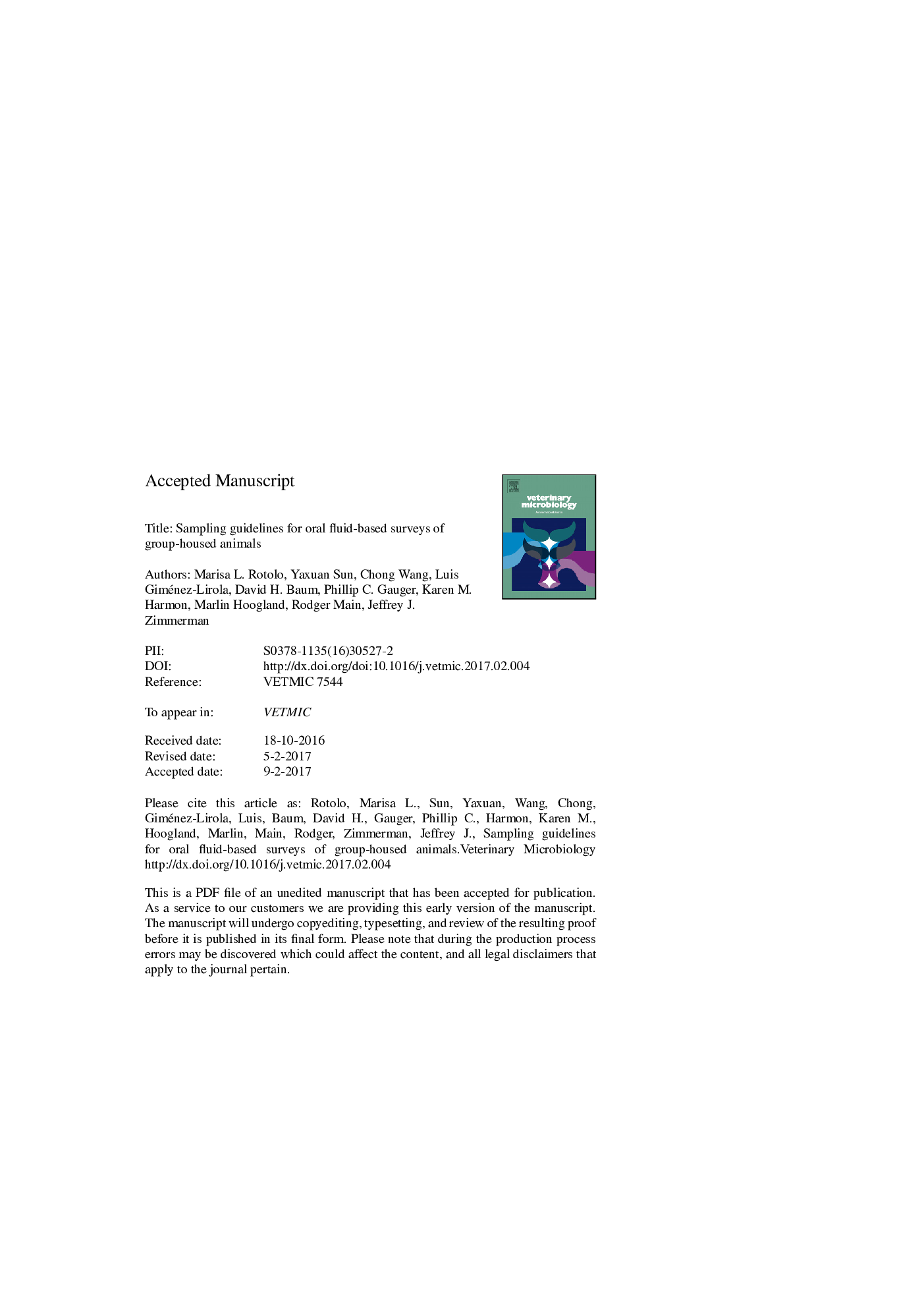| Article ID | Journal | Published Year | Pages | File Type |
|---|---|---|---|---|
| 5545099 | Veterinary Microbiology | 2017 | 41 Pages |
Abstract
Formulas and software for calculating sample size for surveys based on individual animal samples are readily available. However, sample size formulas are not available for oral fluids and other aggregate samples that are increasingly used in production settings. Therefore, the objective of this study was to develop sampling guidelines for oral fluid-based porcine reproductive and respiratory syndrome virus (PRRSV) surveys in commercial swine farms. Oral fluid samples were collected in 9 weekly samplings from all pens in 3 barns on one production site beginning shortly after placement of weaned pigs. Samples (n = 972) were tested by real-time reverse-transcription PCR (RT-rtPCR) and the binary results analyzed using a piecewise exponential survival model for interval-censored, time-to-event data with misclassification. Thereafter, simulation studies were used to study the barn-level probability of PRRSV detection as a function of sample size, sample allocation (simple random sampling vs fixed spatial sampling), assay diagnostic sensitivity and specificity, and pen-level prevalence. These studies provided estimates of the probability of detection by sample size and within-barn prevalence. Detection using fixed spatial sampling was as good as, or better than, simple random sampling. Sampling multiple barns on a site increased the probability of detection with the number of barns sampled. These results are relevant to PRRSV control or elimination projects at the herd, regional, or national levels, but the results are also broadly applicable to contagious pathogens of swine for which oral fluid tests of equivalent performance are available.
Related Topics
Life Sciences
Agricultural and Biological Sciences
Animal Science and Zoology
Authors
Marisa L. Rotolo, Yaxuan Sun, Chong Wang, Luis Giménez-Lirola, David H. Baum, Phillip C. Gauger, Karen M. Harmon, Marlin Hoogland, Rodger Main, Jeffrey J. Zimmerman,
